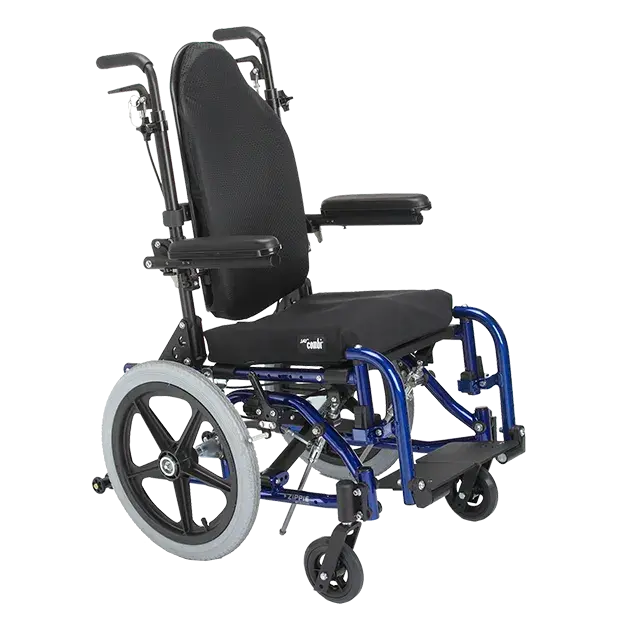
Improving accessibility for wheelchair users
Accessibility is a fundamental right that allows people with disabilities to fully participate in all aspects of life.
For wheelchair users, accessibility and mobility are especially crucial as they directly impact their autonomy and ability to navigate their surroundings.
We will address various ways to improve accessibility, from access ramps and wheelchair lifts to adapted transportation, offering insights on how to make the world more accessible for everyone.
Accessibility Ramps
Ramps are essential elements to ensure access to buildings and urban spaces for people who use wheelchairs. They serve as an alternative to stairs, overcoming level differences in a smooth and safe manner.
Types of Accessibility Ramps
There are various types of ramps, adaptable to different needs and contexts.
-
Portable ramps
Portable ramps are flexible and can be moved as needed, ideal for temporary situations or vehicles. -
Fixed ramps
Fixed ramps, on the other hand, are built as part of the permanent infrastructure of a building or public space. -
Modular ramps
Modular ramps offer an intermediate solution, with the advantage of being adjustable and reconfigurable according to changing access needs.
Standards and Regulations for Accessibility Ramps
To ensure safety and usability, accessibility ramps must follow specific standards and regulations that define maximum slopes, minimum widths, and requirements for handrails and non-slip surfaces.
These standards vary by country and region, but all aim to provide safe and comfortable access for wheelchair users.
Installation of Ramps in Public and Private Spaces
The installation of ramps in public and private spaces is a crucial step towards improving accessibility. It is important for architects, urban planners, and building managers to consider accessibility ramps from the early stages of design, ensuring that all users can easily access buildings, services, and public spaces.
Wheelchair Lifts
Wheelchair lifts are essential in multi-story buildings, allowing people in wheelchairs to overcome vertical differences with ease and safety.
They are a vital part of accessibility infrastructure, making previously inaccessible spaces accessible to everyone.
Introduction to Wheelchair Lifts
Wheelchair lifts vary in design and capacity, meeting a wide range of needs.
They include simple lift platforms to adapted conventional elevators, each with specific features designed to facilitate use by wheelchair users.
The choice of type depends on the context of use, such as public, residential, or commercial buildings, and the specific needs of users.
Legislation and Compliance for Wheelchair Lifts
The installation of wheelchair lifts must comply with regulations and technical standards that ensure their safety and functionality.
This includes specifications for cabin dimensions, lift strength and speed, as well as safety features like alarms and communication systems in case of emergency.
It is crucial to consult local legislation and applicable international standards to ensure lifts are accessible and safe for all users.
Maintenance and Safety in Wheelchair Lifts
Regular maintenance is essential to ensure the safety and efficiency of wheelchair lifts. This includes periodic inspections, cleaning, and testing of safety systems.
Additionally, it is important for users to be familiar with the operation of lifts, including the use of controls and procedures to follow in case of an emergency.
Adapted Transportation
Adapted transportation is essential to promote the independence and inclusion of people in wheelchairs, allowing them to travel for work, education, health, or leisure.
The availability of accessible transportation is a key indicator of a community's accessibility infrastructure quality.
Adapted Transportation Solutions for Wheelchair Users
Adapted transportation solutions vary from modified private vehicles to public transportation systems equipped to accommodate wheelchairs.
This includes buses with access ramps, train cars with dedicated wheelchair spaces, and taxis or ride-sharing services offering adapted vehicles.
The integration of these solutions into the collective transportation system is crucial to ensure inclusive urban mobility. These sections detail the importance of wheelchair lifts and introduce the topic of adapted transportation, highlighting the variety of available solutions and relevant legislation. The next part will continue to explore adapted transportation, focusing on wheelchair users' rights in public transportation and innovations in adapted transportation.
Rights of Wheelchair Users in Public Transportation
Access to public transportation is a fundamental right for wheelchair users, ensured by national legislations and international human rights conventions.
These laws stipulate that transportation systems must be fully accessible, offering features such as adapted vehicles, staff training for proper assistance, and accessible information on routes and schedules.
Knowing these rights is crucial for wheelchair users to claim them and navigate the transportation system confidently.
Innovations and Technologies in Adapted Transportation
Technology plays a vital role in making transportation more accessible for wheelchair users. Recent innovations include mobile apps providing real-time information on public transportation accessibility, more efficient lift platforms, and adapted autonomous vehicles.
Additionally, the integration of accessible electronic payment systems can significantly simplify the travel experience for people with disabilities. These technologies not only improve accessibility but also promote greater independence and social inclusion.
Conclusion
Improving accessibility for wheelchair users is an ethical imperative and a legal obligation that benefits the entire society by promoting inclusion and equal opportunities.
From the installation of accessibility ramps and wheelchair lifts to the adoption of adapted transportation solutions, each measure taken is a step towards a more accessible world.
Furthermore, technological innovations continue to open new pathways for wheelchair mobility, making public and private transportation more inclusive than ever.
By ensuring that cities and services are designed with accessibility in mind, we can build communities where everyone can move freely and without barriers.
Frequently Asked Questions (FAQs)
1. How can I know if a building is wheelchair accessible?
Accessible buildings typically have access ramps, wheelchair lifts, wide doors, and adapted bathrooms.
Many also provide this information on their websites or through clear signage at the entrance.
2. What should I do if a public transportation service is not accessible?
If you encounter a public transportation service that is not accessible, it is important to report the issue to local authorities or the responsible company.
You can also seek support from organizations advocating for the rights of people with disabilities to demand improvements.
3. Are there grants or support programs for installing ramps or lifts in residences?
Many countries offer grant programs or financial incentives for installing ramps or lifts in private residences. This information can be found in government housing departments or disability support organizations.
4. How can assistive technologies improve mobility for wheelchair users?
Assistive technologies, such as electric wheelchairs, adapted navigation apps, and environmental control devices, can significantly improve the mobility and independence of people in wheelchairs, facilitating access to various environments and services.
5. How can I contribute to improving accessibility in my community?
You can contribute by raising awareness about the importance of accessibility, supporting accessible businesses and services, and participating in local infrastructure improvement initiatives.
Additionally, involvement in municipal councils or advocacy groups can provide platforms to propose significant changes.
Discover the freedom of movement with our wheelchairs
At Loh Medical, we believe in the importance of mobility and independence for everyone. Our wheelchairs are designed with you in mind, combining comfort, technology, and adaptability.
Whether for daily use or specific rehabilitation needs, we have the ideal solution. Explore our range of wheelchairs and find the perfect one for you or someone you love.
Let's take the next step towards the freedom of movement together.






